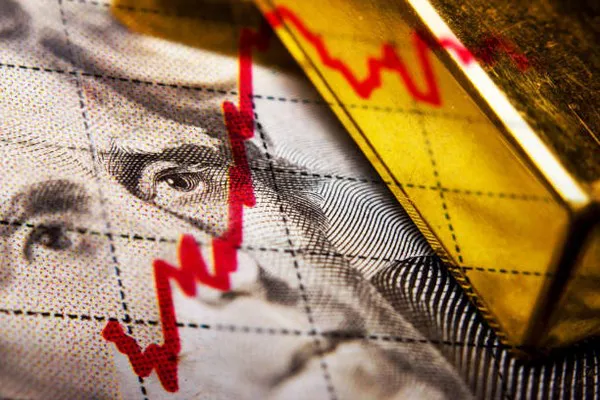Gold has long been regarded as a valuable asset, serving as a hedge against inflation, a safe haven during economic uncertainties, and a symbol of wealth and stability. Investors and traders globally keep a keen eye on gold prices, and the advent of technology has transformed how and when gold is traded. A pertinent question that arises in this context is: “Is gold traded 24/7?” This article delves into the intricacies of gold trading hours, the mechanisms that facilitate its near-continuous trading, and the implications for investors and the market as a whole.
Understanding Gold Markets
Before addressing the trading hours, it is essential to understand the various markets where gold is traded. Gold can be traded in several forms, including physical gold, gold futures, gold ETFs (exchange-traded funds), and through forex markets.
Physical Gold: This includes bullion bars, coins, and jewelry. Trading physical gold primarily occurs through bullion dealers, jewelry stores, and pawn shops, and their hours are typically aligned with regular business hours.
Gold Futures: Futures contracts are traded on exchanges such as the New York Mercantile Exchange (NYMEX) and the Tokyo Commodity Exchange (TOCOM). These contracts allow investors to buy or sell gold at a predetermined price at a future date.
Gold ETFs: These are traded on stock exchanges, offering investors a way to invest in gold without holding the physical asset. Examples include SPDR Gold Shares (GLD) and iShares Gold Trust (IAU).
Forex Markets: Gold can also be traded as a currency pair, typically against the US dollar (XAU/USD), on forex platforms.
Global Trading Hours
Gold trading is influenced by the operational hours of major financial centers around the world. Unlike stock markets, which have fixed trading hours, gold trading benefits from overlapping time zones of global financial markets, creating the perception of a 24/7 market.
Asian Markets: The gold trading day begins in Asia, with major markets in Tokyo, Hong Kong, and Shanghai opening around 8:00 AM local time. These markets account for a significant portion of global gold trading volume.
European Markets: As Asian markets wind down, European markets in London and Zurich take the lead. The London Bullion Market Association (LBMA) is particularly influential, with London being a key hub for gold trading.
North American Markets: The trading day continues with the opening of North American markets, particularly in New York. The COMEX division of the NYMEX is a critical player, where gold futures contracts are actively traded.
The 24/7 Trading Mechanism
Although no single market operates 24/7, the overlapping hours of these global markets create a near-continuous trading environment for gold. Here’s how it works:
Electronic Trading Platforms: The rise of electronic trading platforms and online brokers has enabled investors to trade gold virtually around the clock. Platforms such as E*TRADE, TD Ameritrade, and Interactive Brokers facilitate gold trading across different markets, bridging the gaps between time zones.
After-Hours Trading: Many exchanges offer after-hours trading sessions, allowing investors to react to news and events that occur outside of regular trading hours. For instance, the COMEX provides extended trading hours through its Globex electronic trading platform.
Over-the-Counter (OTC) Markets: OTC markets operate outside of formal exchanges, enabling direct transactions between parties. These markets are crucial for maintaining liquidity and facilitating trades when traditional markets are closed.
Factors Driving Continuous Trading
Several factors contribute to the demand for continuous trading in gold:
Global Events: Gold prices are highly sensitive to geopolitical events, economic data releases, and central bank policies. Continuous trading allows investors to respond promptly to such events, mitigating potential losses or capitalizing on opportunities.
Hedging and Speculation: Traders and investors use gold to hedge against currency fluctuations, inflation, and other financial risks. The ability to trade gold around the clock is essential for maintaining effective hedging strategies.
Market Liquidity: Continuous trading ensures liquidity, making it easier for large investors and institutions to enter and exit positions without significantly impacting the market price.
Technological Advancements: Advances in trading technology, including algorithmic trading and high-frequency trading, have made it possible to execute trades in milliseconds, further supporting the demand for 24/7 trading.
Implications for Investors
The near-24/7 trading environment for gold presents both opportunities and challenges for investors:
Increased Flexibility: Investors can take advantage of global market movements and react to news and events in real-time. This flexibility is particularly beneficial for those managing portfolios across different time zones.
Risk Management: Continuous trading allows for better risk management, enabling investors to hedge positions and adjust their portfolios in response to market changes.
Market Volatility: While continuous trading can provide opportunities, it also introduces the potential for increased volatility, especially during low-liquidity periods when fewer market participants are active.
Access to Information: The availability of real-time data and news feeds is crucial for making informed trading decisions. Investors must stay abreast of global economic indicators, geopolitical developments, and market trends.
See Also XM’s Offering of XAU/USD Trading
Conclusion
Gold trading operates in a near-24/7 environment, facilitated by the overlapping hours of global financial markets, electronic trading platforms, and OTC markets. This continuous trading landscape offers investors flexibility, enhanced risk management, and the ability to respond promptly to global events. However, it also necessitates vigilance and a comprehensive understanding of market dynamics.
For those looking to invest in gold, it is essential to recognize the complexities of the market and stay informed about the factors influencing gold prices. By leveraging the tools and resources available, investors can navigate the 24/7 gold trading landscape effectively, maximizing their potential for success in this dynamic and ever-evolving market.


